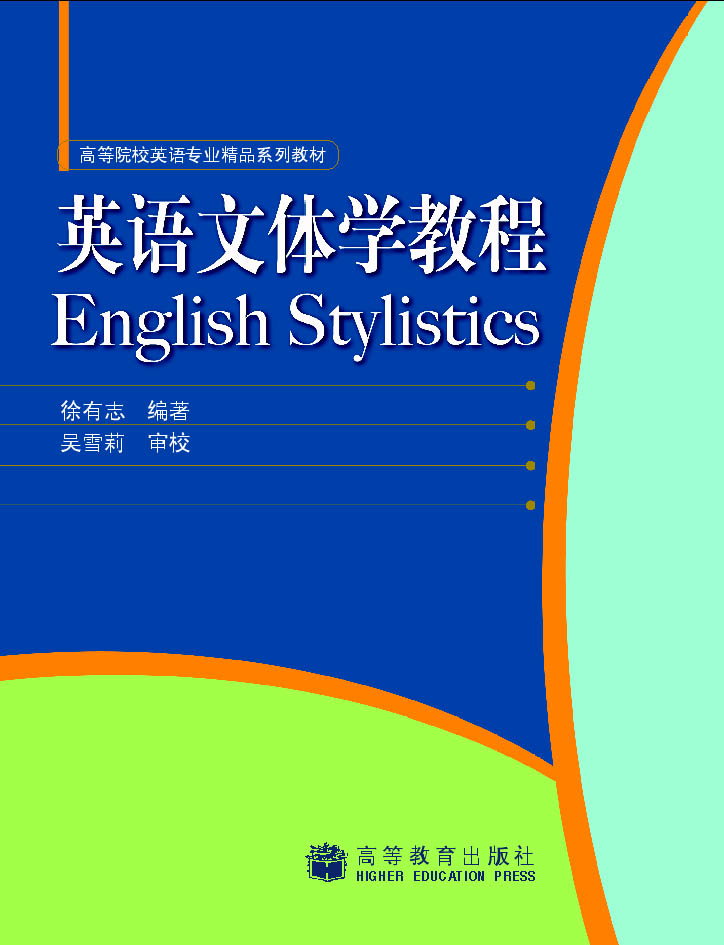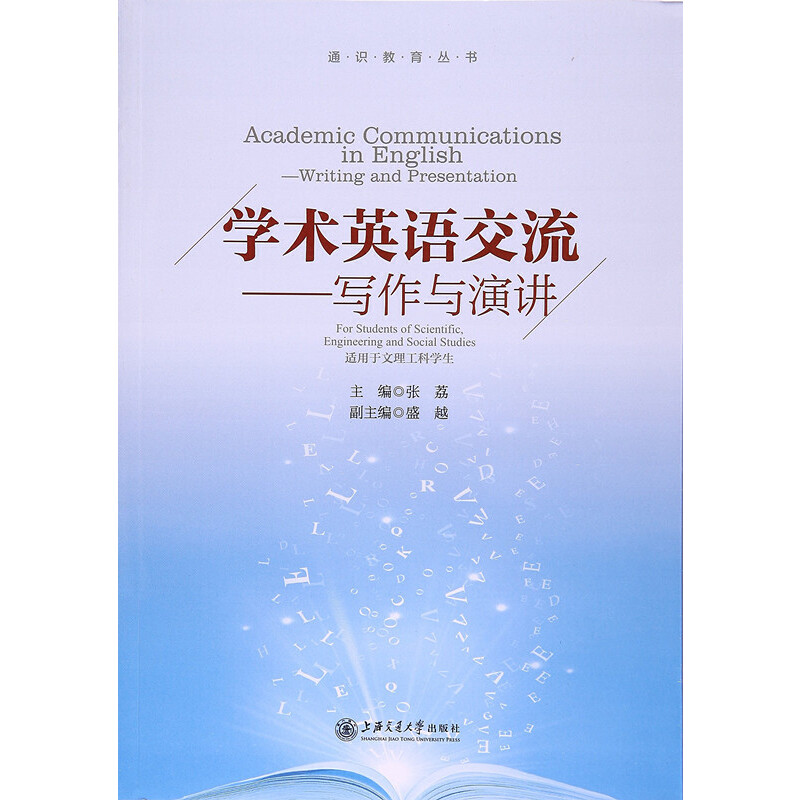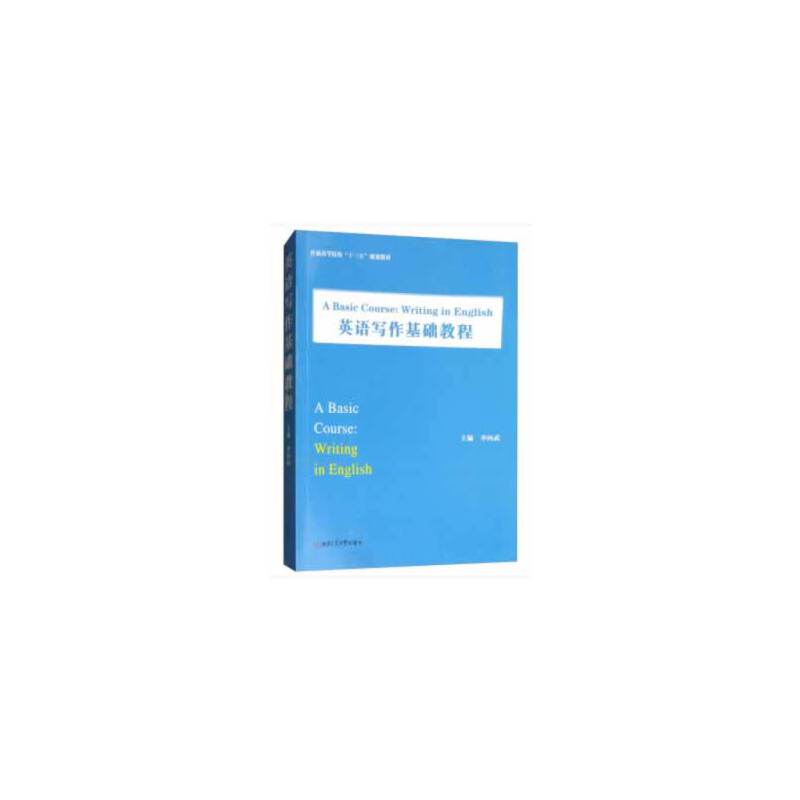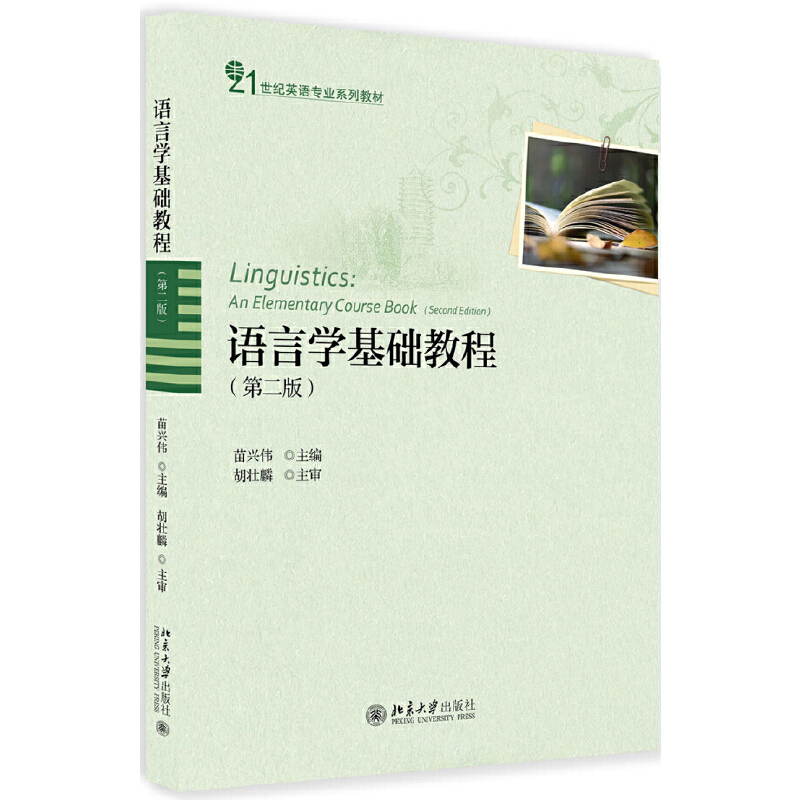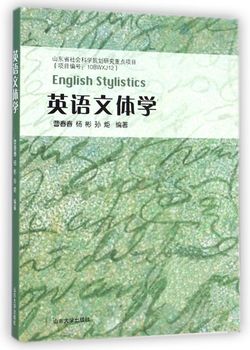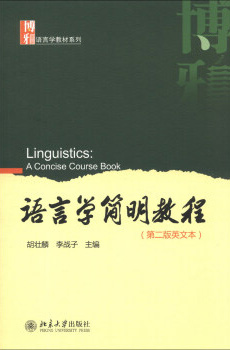- 高等教育出版社
- 9787040171426
- 1
- 254091
- 平装
- 16开
- 2005-03-31
- 500
- 321
《英语文体学教程》(初版为《现代英语文体学》)本着基础理论与实践并重的原则,简明阐述了当代文体学的理论框架和语言分析方法,具体探讨了语言使用的场合特征与语言特征的相互关系,详细分析了各体英语(包括方言和语域,主要是语域)的语言特点,重点指明了不同体裁文学作品(包括小说、戏剧和诗歌)的文宇特色。本书对初步掌握文体学理论概貌和语言描述方法,系统了解各体英语特点,提高恰当运用英语的交际能力,逐步熟悉不同体裁文学作品的语言风格,加深对文学作品的理解和欣赏,无疑将起到一定的作用。本书可供大学英语专业高年级学生使用,也可供攻读硕士学位的研究生和其他英语工作者参考。
《英语文体学教程》的编著者徐有志同志是英语语言文学资深教授、博士生导师,长期从事文体学教学与研究,在美进修期间又得到语言学博士Carolyn Dirksen教授及人类学博士Murl Dirksen教授的帮助。本书初版手稿曾由河南大学外语系名誉主任、英语语言文学研究所所长、博士生导师,华籍美人ShirleyWood教授审校,经中山大学外国语学院博士生导师王宗炎教授审阅并作序。
1 The Concern of Stylistics
1.1 Stylisties
1.2 Language
1.3 Aspects of the Speech Event
1.4 Language Varieties and Function
1.5 Style
1.6 The Study of Style
1.7 The Concern of Stylistic Study
1.8 Stylistics and Other Spheres of Study
2 The Need for Stylistic Study
2.1 Stylistic Study Helps Cultivate a Sense of Appropriateness
2.2 Stylistic Study Sharpens the Understanding and Appreciation of Literary Works
2.3 Stylistic Study Helps Achieve Adaptation in Translation
3 Varieties of Language
3.1 Two Kinds of Varieties
3.2 Dialects
3.3 Registers
3.4 The Mutual Dependence Between Register and Dialect
3.5 The Social Meaning of Language Varieties Linguistic Description
4.1 The Aims of Stylistics in Linguistic Descrip-tion
4.2 Levels of Language
4.3 Stylistic Features
4.4 Procedure of Linguistic Description
4.5 The Practical Description and Analysis in This Book
5 Formal vs Informal Language
5.1 The Interpersonal Function of Language
5.2 Degrees of Formality
5.3 Functional Tenor and Degrees of Formality
5.4 Martin Joos’Classification
5.5 Speech Situation and Formality
5.6 Formality and Linguistic Features
5.7 Sets of Co-occurring Features
5.8 Involved vs Informational Texts
5.9 Tenors. Field, and Mode
6 Spoken vs Written Language
6.1 Striking Differences
6.2 Stylistic Differences
6.3 Examples of Contrast
6.4 More Delicate Distinctions Amongst Modes of Discourse
6.5 Mode. Field, and Tenors
7 The English of Conversation
7.l Necessity of Studying Speech
7.2 Necessity of Studying Conversation
7.3 Object of Study
7.4 An Adapted Way of Transcription
7.5 A Sample Text of Casual Conversation
7.6 General Features
7.7 Stylistic Features in Terms of Levels of Language
7.8 Summary
7.9 Other Kinds of Conversation
8 The English of Public Speech
8.1 Scope of Public Speech
8.2 A Sample Text for Analysis
8.3 General Features of Public Speech
8.4 Stylistic Features of Public Speech
9 The English of Advertising
9.1 Advertising English as a Variety
9.2 Newspaper Advertising
9.3 Radio Advertising
9.4 Television Advertising
10 The English of News Reporting
10.1 The English of News Reporting as a Variety 10.2 Two Sample Texts for Analysis
10.3 General Features of Newspaper Reporting
10.4 Stylistic Features of Newspaper Reporting
10.5 Stylistic Features of Radio and Television News
11 The English of Science and Technology
11.1 The Scope of the English of Science and Tech-nology
11.2 Sample Texts for Analysis
11.3 General Features of EST
11.4 Stylistic Features of EST
11.5 Features of Spoken EST
12 The English of Legal Documents
12.1 The English of Legal Documents as a Variety
12.2 Sample Texts for Analysis
12.3 Stylistic Features of Legal English
13 The English of Literature (Ⅰ) — General Remarks
13.1 Literature as Language Art
13.2 Literary Language and Ordinary Language
13.3 Literary English as a Variety
14 The English of Literature (Ⅱ) —The Language of Fiction
14.1 Manipulation of Semantic Roles
14.2 Creation of Images and Symbols
14.3 Preference in Diction
14.4 Artistic Manipulation of Sentence Variety and Rhythm
14.5 Employment of Various Points of View
14.6 The Subtle Workings of Authorial Tone
14.7 Various Ways of Presenting Speech and Thought
15 The English of Literature (Ⅲ) — The Language of Drama
15.1 Manipulation of the Naturalness of Characters’ Speech
15.2 Exploitation of Different Speech Act, Turn-taking and Politeness Patterns
15.3 Use of Assumptions, Presuppositions and Conversational Implicative
16 The English of Literature (Ⅳ) —The Language of Poetry
16.1 Various Devices for Compression
16.2 Extreme Care in Word Choice
16.3 Free Arrangement of Word Order
16.4 Lexical and Syntactical Repetition
16.5 Full Manipulation of Sound Effects
16.6 The Manipulation of Sight
16.7 Analysis of Poems at All Levels
Glossary
Bibliography

